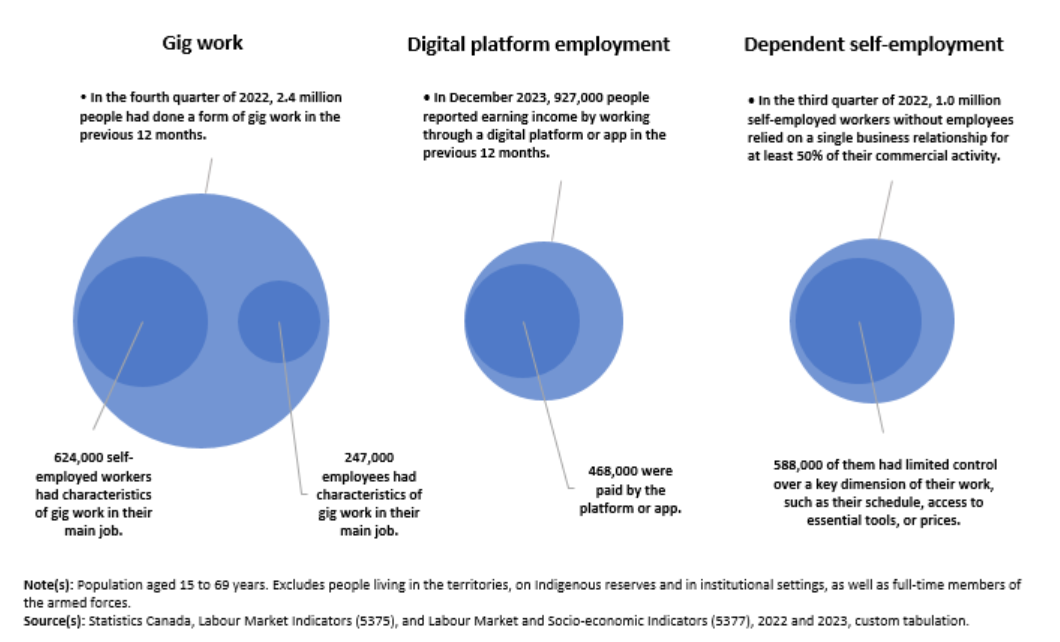
But who exactly are 'gig workers'?

The gig economy attracted close to one million Canadian workers in the year 2022, according to a report from Statistics Canada (StatCan).
In the fourth quarter of 2022, 2.4 million Canadians had done a form of gig work in the previous 12 months, according to the report.
Among them, about 247,000 Canadians aged 15 to 69 years who were paid employees in their main job had “employment characteristics that were consistent with the definition of gig work” in the fourth quarter of 2022.
Also, during that time, an average of 624,000 self-employed Canadians had this gig work.
In December 2023, 927,000 people reported earning income by working through a digital platform or app in the past year; 468,000 among them were paid by the platform or app, according to StatCan.
Nine in 10 employees said they will continue doing “gig jobs” until their retirement, according to a previous report from Zety.

Source: Statistics Canada
But who exactly are gig workers?
According to StatCan’s report, to be counted as gig employees, workers must be temporary employees and meet both of the following criteria:
People who accept short-term tasks, projects or jobs:
People who have no assurance of steady employment and must make specific efforts on their own to obtain each task, project, or job:
Meanwhile, these are criteria to measure two types of self-employed gig work as a main job:
“Lower engagement gig workers”: People who do not have employees, partners, or a dedicated building or space and either:
“Vulnerable sole proprietors”: People who do not have employees, partners, or a dedicated building or space and:
In November 2023, the British Columbia government proposed employment standards for gig workers in the province.
“The gig economy has generated both risks and opportunities for workers in Canada. On one hand, new technologies have made it easier for Canadians to engage in short paid tasks, projects or jobs that can supplement income and are sometimes pursued as a main activity,” said StatCan.
“On the other hand, business relationships that emerge in the context of the gig economy may generate situations of ‘dependent self-employment’: a type of work relationship where workers are self-employed but lack control over important aspects of their work, such as setting prices or organizing their schedule.”
Gig workers may not think or act like full-time employees, and “corporate leadership must understand the needs and aspirations of these temporary workers to manage the workforce better,” said The Economic Times editor Debleena Majumdar in a report.
In that report, Ankit Aggarwal, founder and CEO of Unstop noted: “Effectively managing a gig workforce requires a unique set of skills. To succeed, leaders must integrate traditional leadership principles with an understanding of the distinctive dynamics of the gig economy.”
An independent panel has been appointed to review the B.C. Labour Relations Code (LRC) and make recommendations for potential amendments. According to one expert in the field, a sector-wide unionization of gig workers could be a possibility, HRD recently reported.